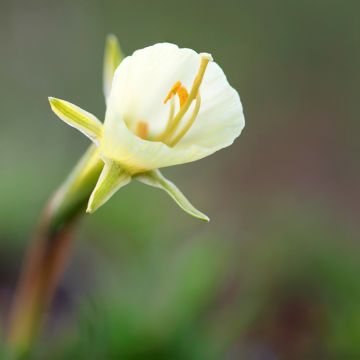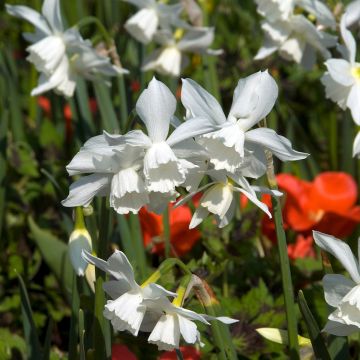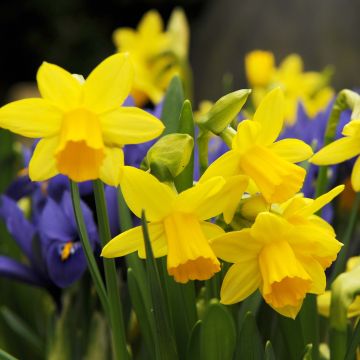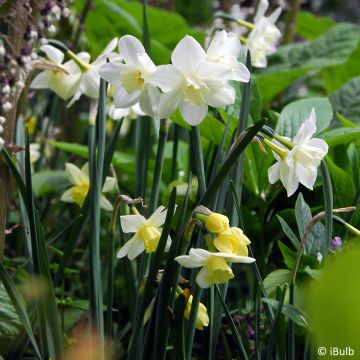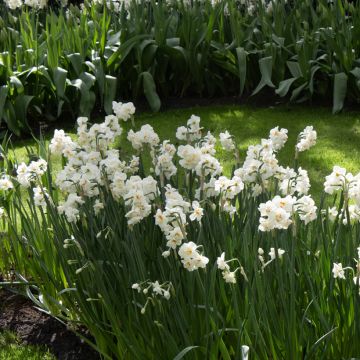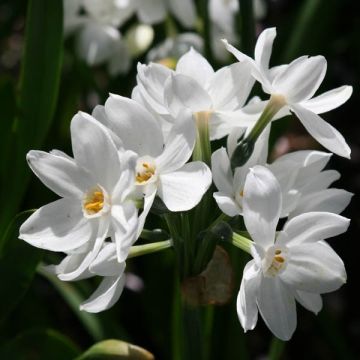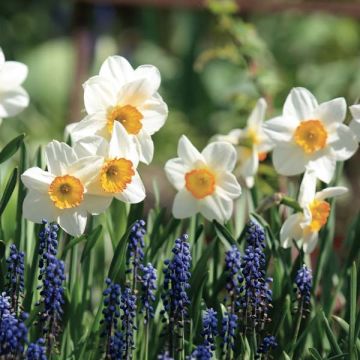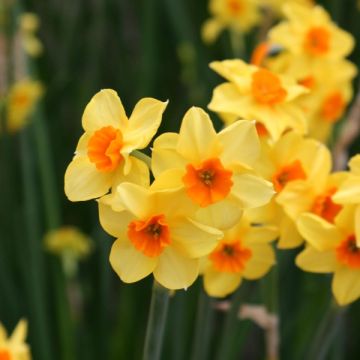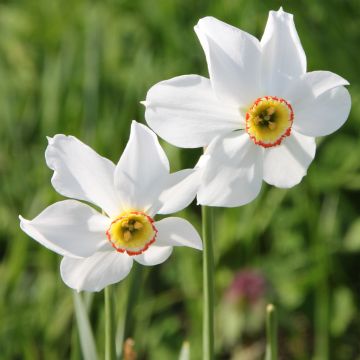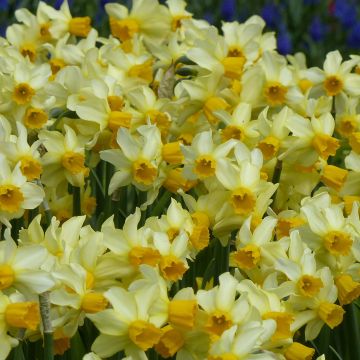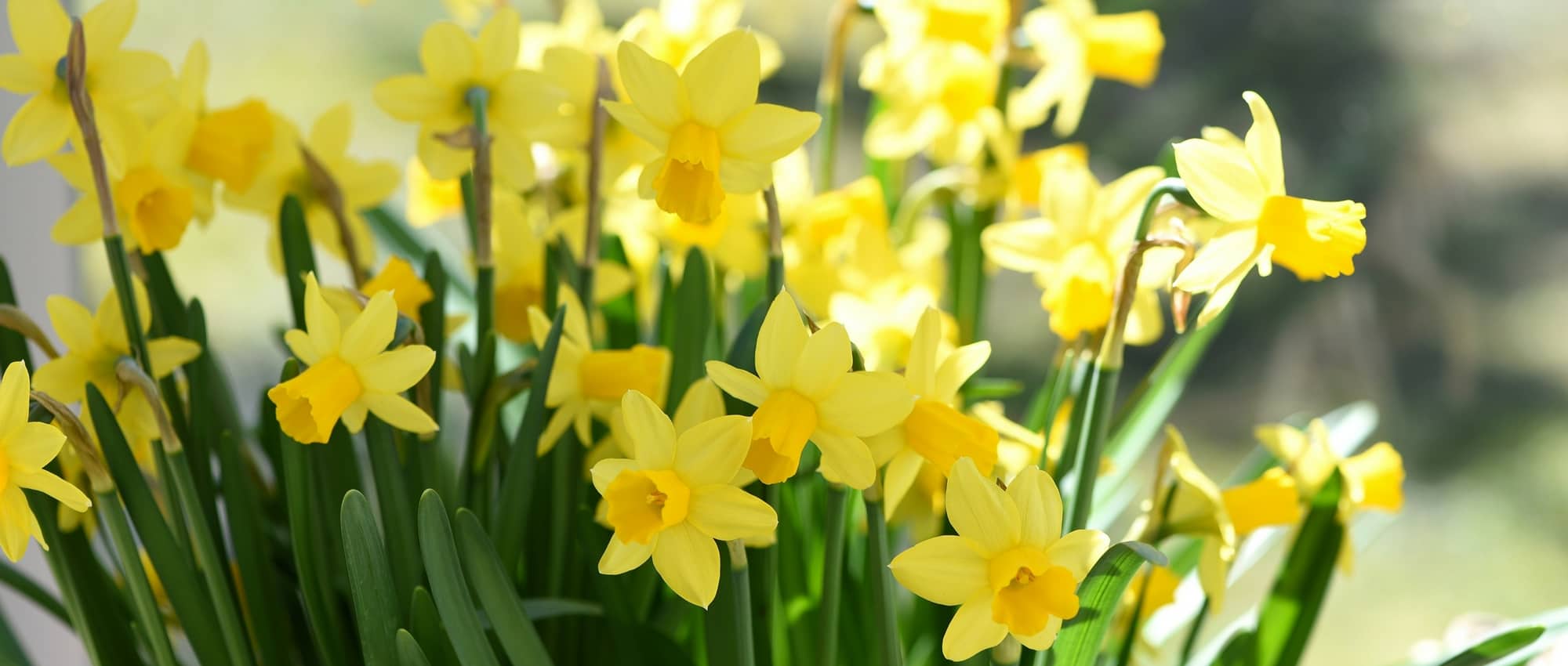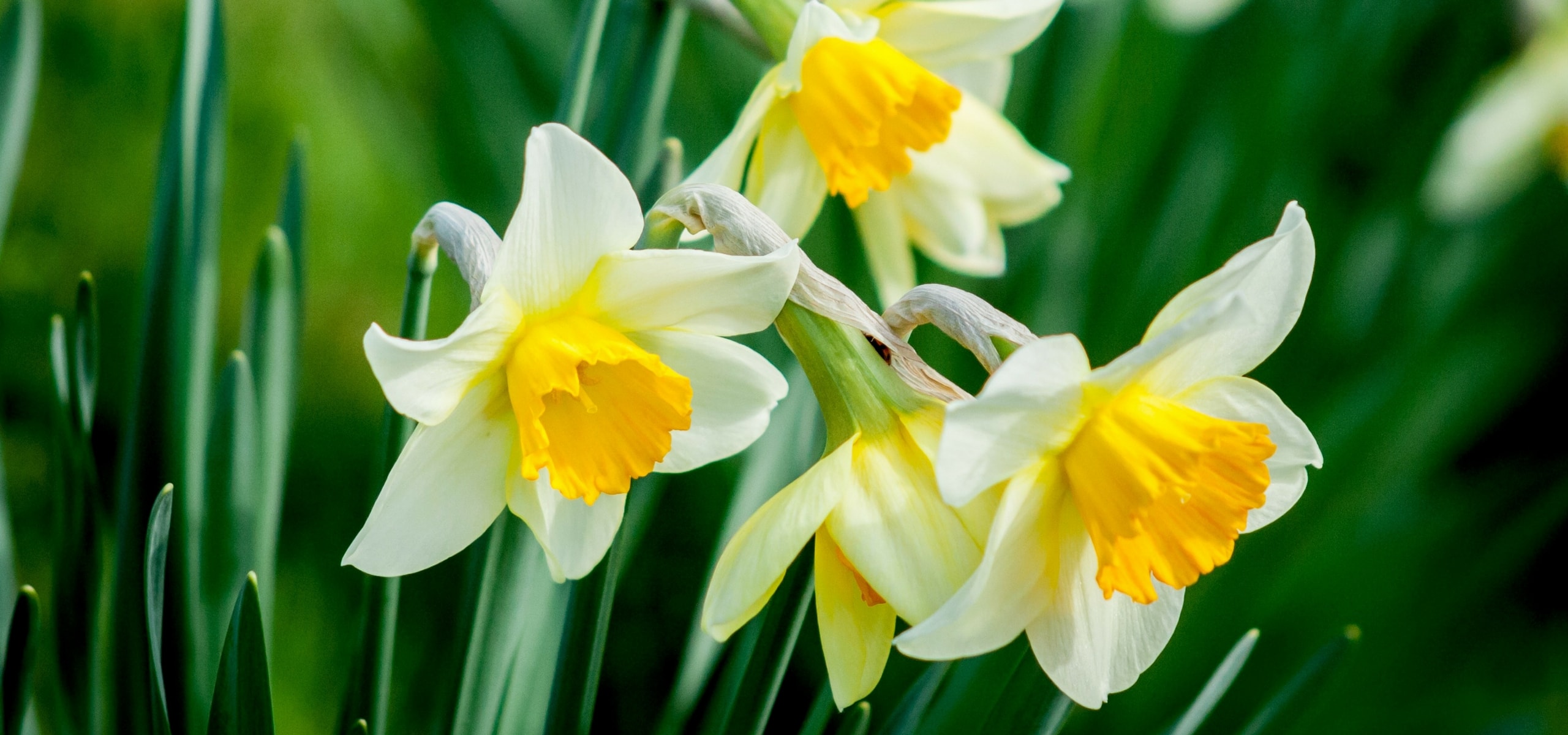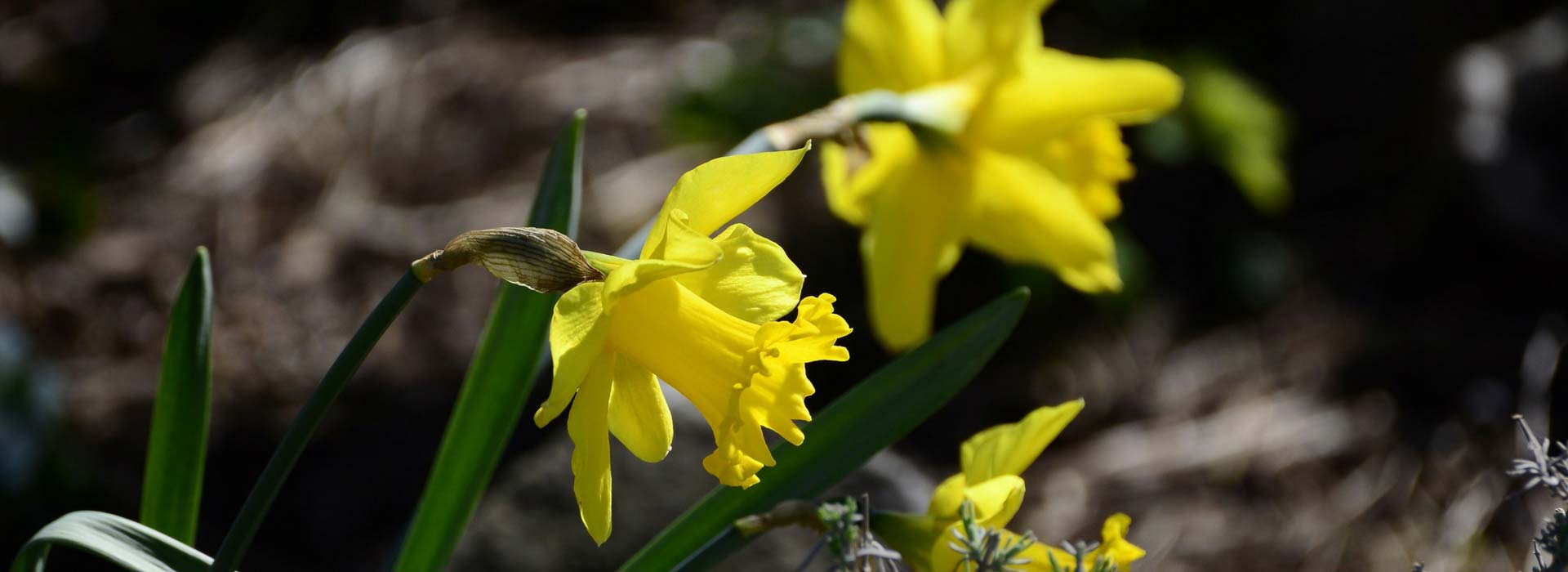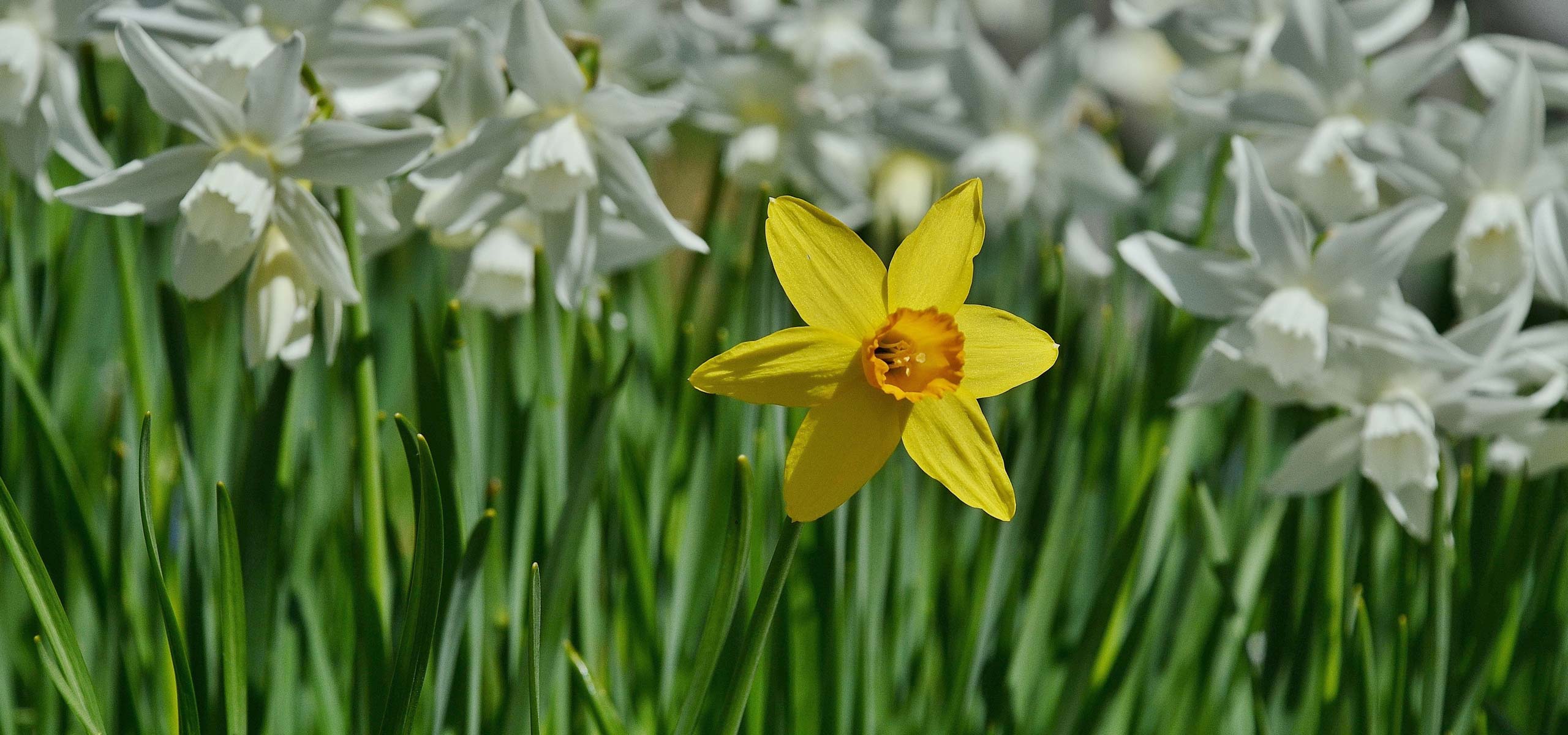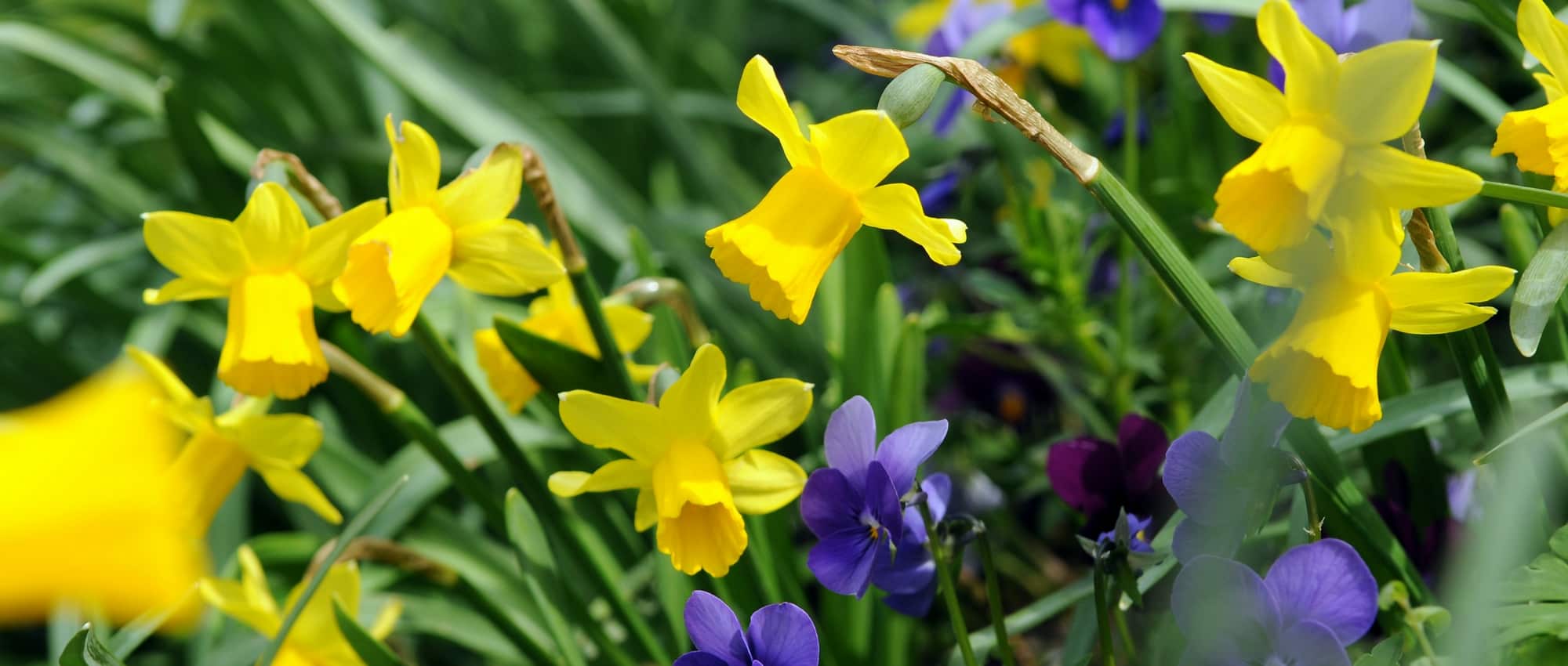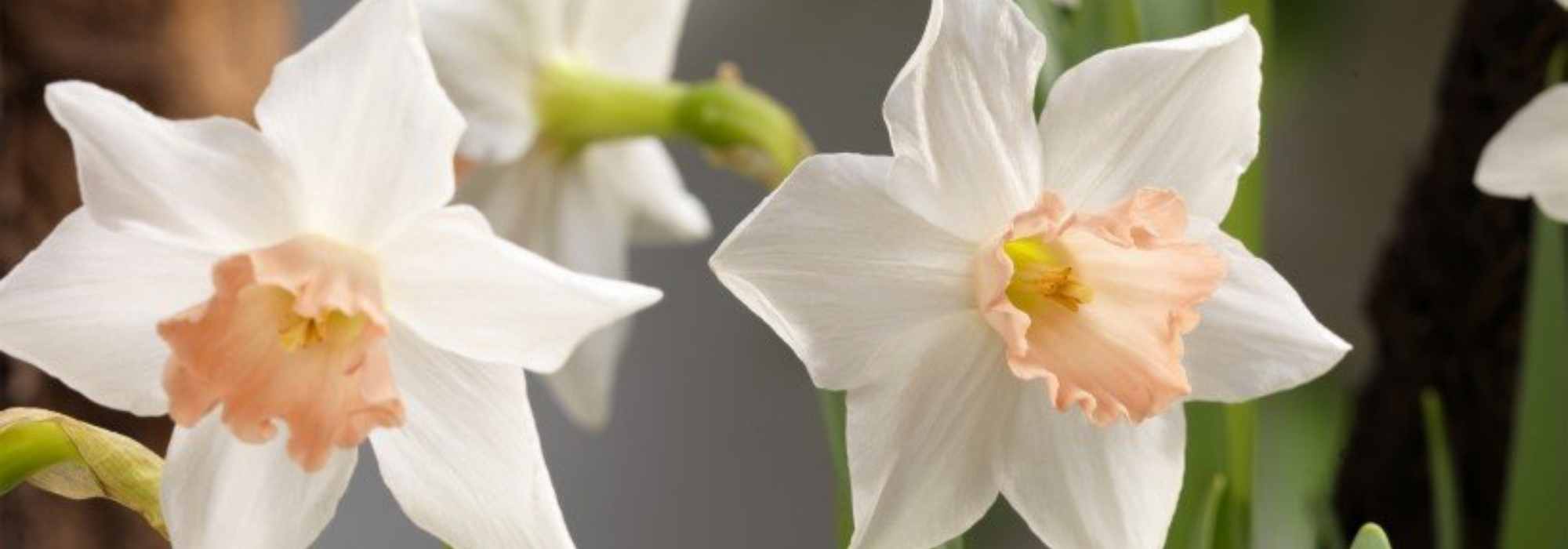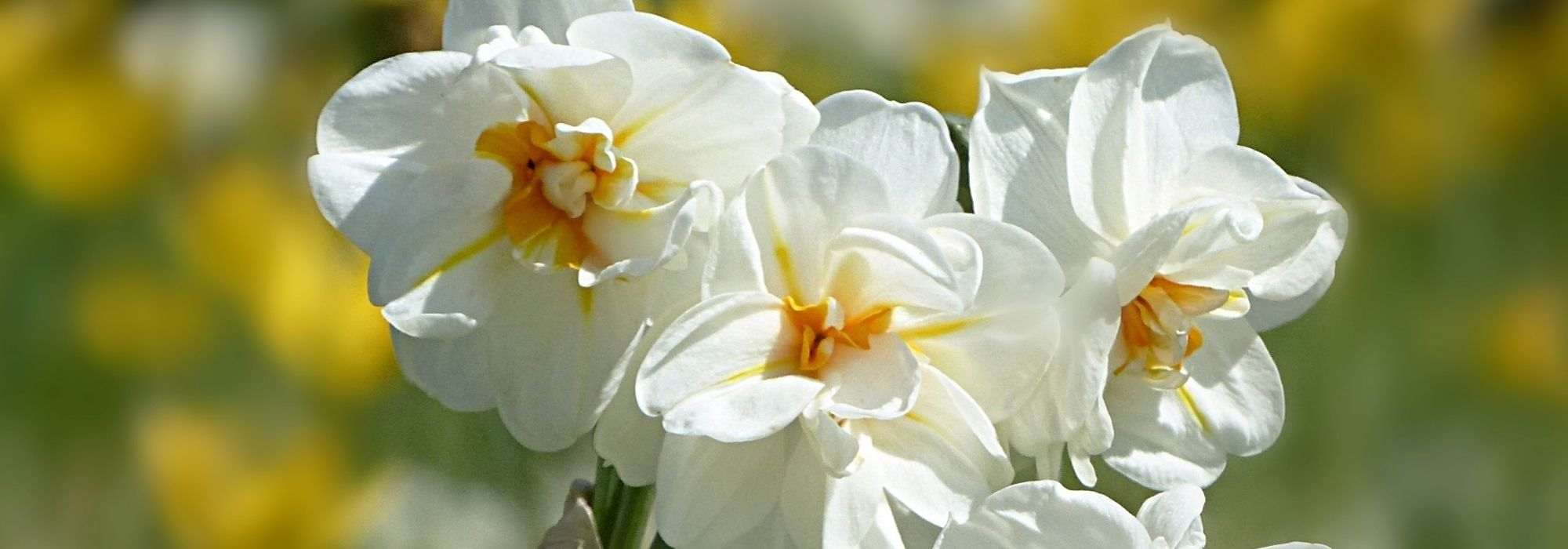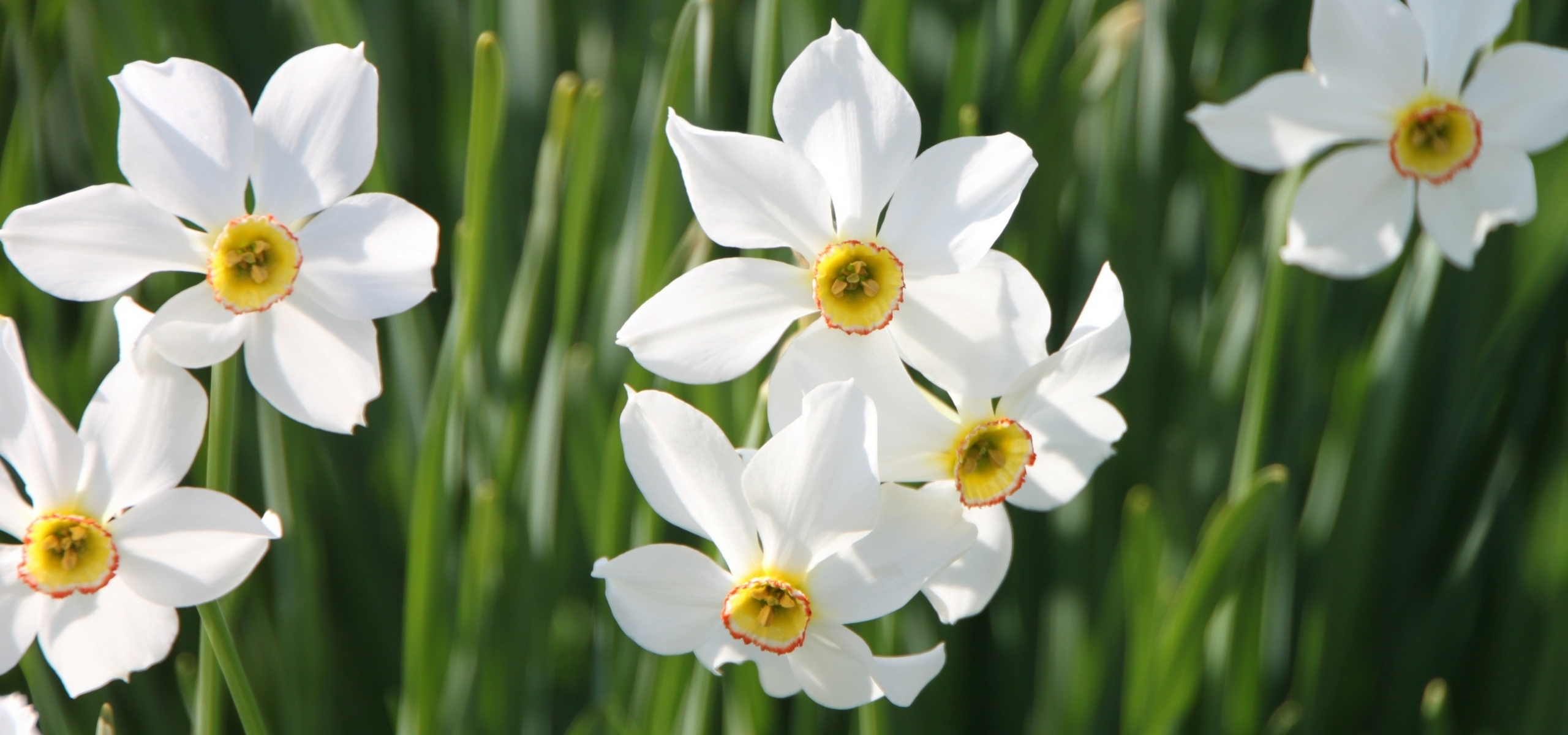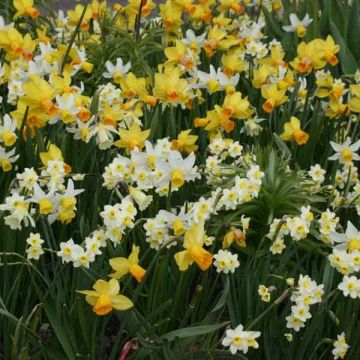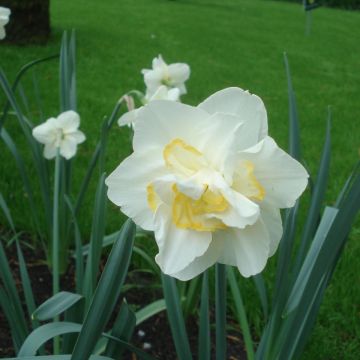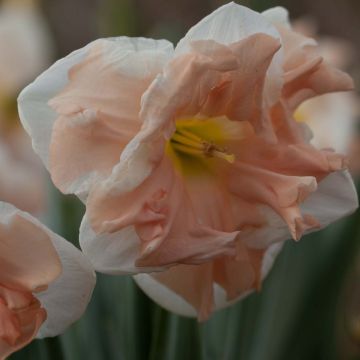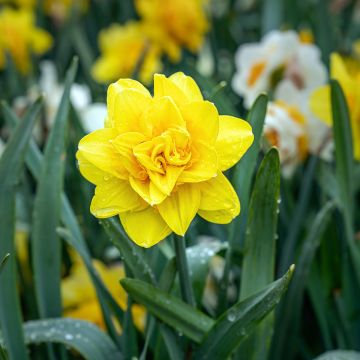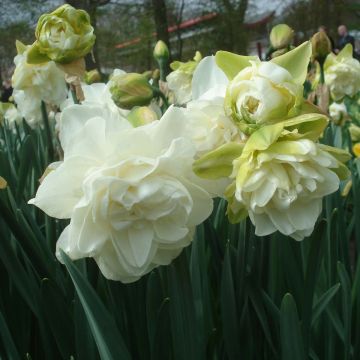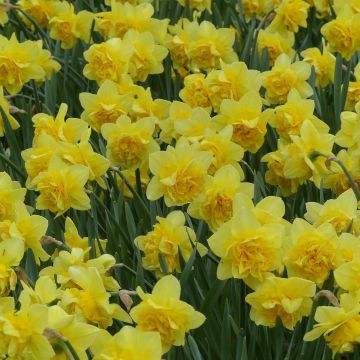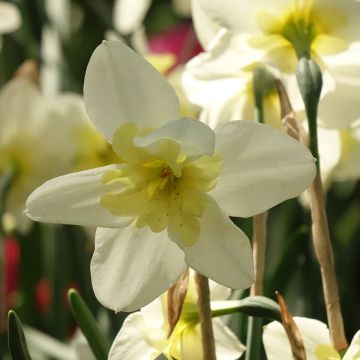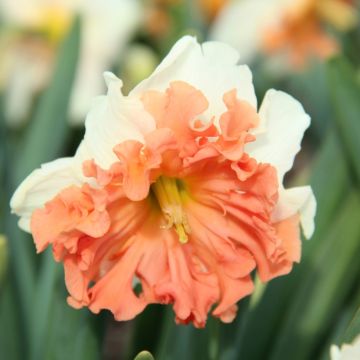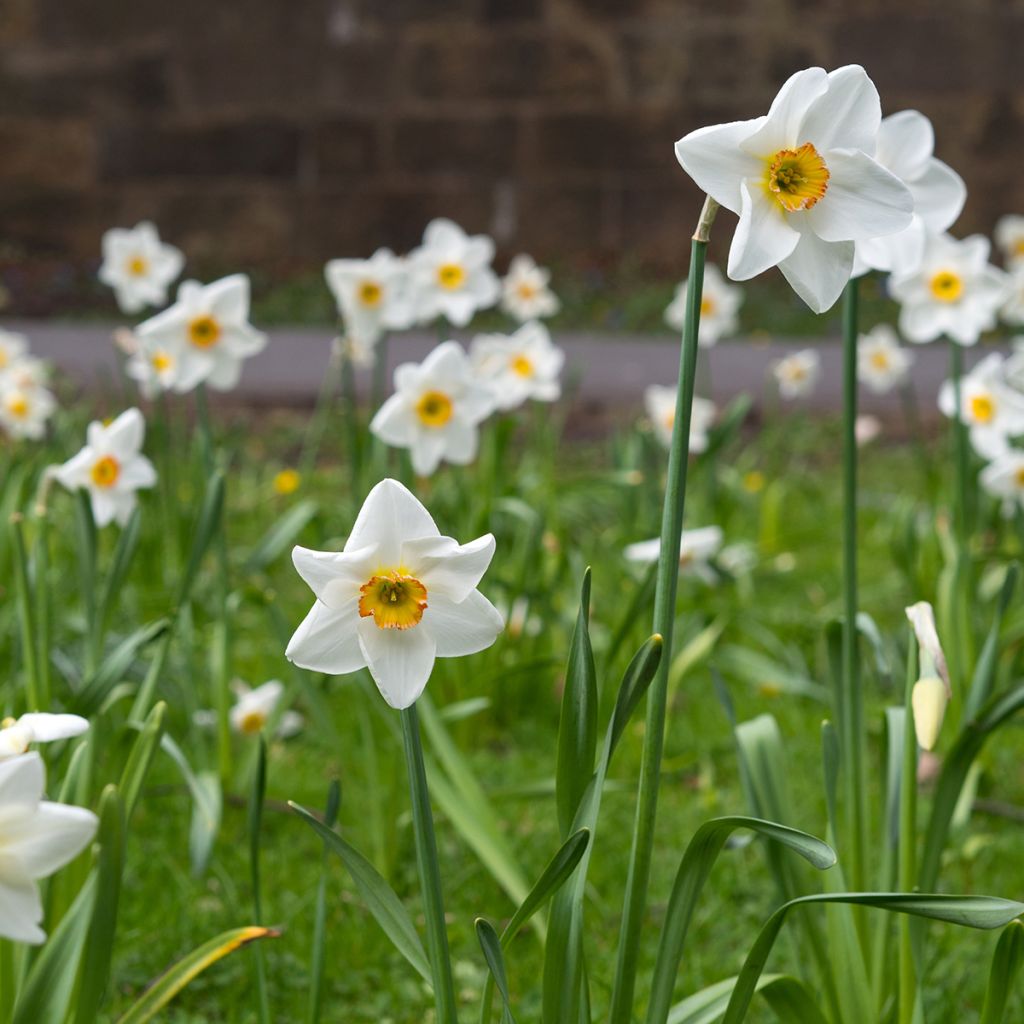

Narcissus Lancaster - Narcisse, Narcisse à petite couronne, Jonquille à couronne
Narcissus Lancaster
Narcissus Lancaster
Daffodil, Narcissus
Special offer!
Receive a €20 voucher for any order over €90 (excluding delivery costs, credit notes, and plastic-free options)!
1- Add your favorite plants to your cart.
2- Once you have reached €90, confirm your order (you can even choose the delivery date!).
3- As soon as your order is shipped, you will receive an email containing your voucher code, valid for 3 months (90 days).
Your voucher is unique and can only be used once, for any order with a minimum value of €20, excluding delivery costs.
Can be combined with other current offers, non-divisible and non-refundable.
Why not try an alternative variety in stock?
View all →This plant carries a 6 months recovery warranty
More information
We guarantee the quality of our plants for a full growing cycle, and will replace at our expense any plant that fails to recover under normal climatic and planting conditions.
Would this plant suit my garden?
Set up your Plantfit profile →
Description
The Narcissus ‘Lancaster’ captivates with its slender habit, delicate flowering, and soft, nuanced colour palette. This small-crowned variety offers white flowers with a greenish-yellow heart, delicately frilled around the edges, which brighten spring landscapes from April onwards. Hardy, it thrives in light, well-drained soil, in sunny or lightly shaded positions. In borders, rockeries, or pots, it structures displays while lending them a natural elegance. Simply take care to avoid excess moisture in winter, especially in clay soil.
The Narcissus or Daffodil 'Lancaster' is a horticultural cultivar of Daffodil belonging to the Amaryllidaceae family. The Narcissus genus encompasses a great diversity of species and varieties, whether botanical, like the poet's narcissus, or resulting from horticultural selections. Among them, the true jonquil (Narcissus jonquilla) is distinguished by its fragrant yellow flowers and its fine leaves reminiscent of rush foliage. However, in some regions, the name jonquil is commonly used to refer to the trumpet daffodil (Narcissus pseudonarcissus), which perpetuates the confusion between these two quite distinct plants. The 'Lancaster' is classified in Division 3 of daffodils by the Royal Horticultural Society, characterised by small-cupped flowers. This cultivar is distinguished by its white flowers with slightly reflexed petals, surrounding a shallow, ribbed and frilled corona, of a yellow hue with a green base and an orange rim. The flowers measure approximately 9 cm in diameter, are slightly fragrant, and appear from mid-April to the end of May. The plant reaches a height of 35 to 45 cm and has an upright habit with linear, green, and deciduous leaves. The root system is bulbous, with fibrous roots extending 15 to 20 cm deep. The Narcissus 'Lancaster' makes an excellent cut flower. Daffodils are often used in gardens for their ability to repel pests thanks to the toxicity of the bulbs and leaves.
In a spring garden, the Narcissus ‘Lancaster’ will play a delicate and bright note. Its graceful habit and refined flowering harmonise wonderfully with the bluish simplicity of Brunneras, wood hyacinths or grape hyacinths, and with the finely divided foliage of spring ferns. It fits naturally into an informal border or a light woodland setting, and in pots placed on a step or windowsill. For a floral picture full of nuance, pair it with the pastel softness of the Narcissus ‘Pink Charm’.
For cut flower arrangements: We advise not to mix Daffodils with other flowers, particularly tulips. Daffodil stems contain a substance that causes other flowers to wilt quickly. This detrimental effect on other types of flowers can be attenuated by dipping the cut ends of the daffodil stems in hot water for 1 to 2 minutes.
Plant habit
Flowering
Foliage
Botanical data
Narcissus
Lancaster
Amaryllidaceae
Daffodil, Narcissus
Cultivar or hybrid
Planting and care
Daffodils flower from March to May and return every year. Very easy to grow, they thrive equally well in the shade of woodland or a sunny flowerbed. Plant them 10 cm deep and 10 cm apart. Group the Lancaster Daffodil in clusters of at least 5 bulbs, in uniform colour patches or mixed. You can plant them in lawns. In this case, lift the turf, dig and loosen the soil to at least 20 cm (the height of a spade). Plant your bulbs, cover with soil and replace the turf. Choose a spot where you won't mow as it is necessary to let the daffodil leaves wither before cutting them. It is at this time that the bulb replenishes itself and prepares the flowers for the following year. Remember to cut the flowers as soon as they have faded to avoid seed formation, which would unnecessarily exhaust the bulb.
Planting period
Intended location
Care
Planting & care advice
This item has not been reviewed yet - be the first to leave a review about it.
Similar products
Haven't found what you were looking for?
Hardiness is the lowest winter temperature a plant can endure without suffering serious damage or even dying. However, hardiness is affected by location (a sheltered area, such as a patio), protection (winter cover) and soil type (hardiness is improved by well-drained soil).

Photo Sharing Terms & Conditions
In order to encourage gardeners to interact and share their experiences, Promesse de fleurs offers various media enabling content to be uploaded onto its Site - in particular via the ‘Photo sharing’ module.
The User agrees to refrain from:
- Posting any content that is illegal, prejudicial, insulting, racist, inciteful to hatred, revisionist, contrary to public decency, that infringes on privacy or on the privacy rights of third parties, in particular the publicity rights of persons and goods, intellectual property rights, or the right to privacy.
- Submitting content on behalf of a third party;
- Impersonate the identity of a third party and/or publish any personal information about a third party;
In general, the User undertakes to refrain from any unethical behaviour.
All Content (in particular text, comments, files, images, photos, videos, creative works, etc.), which may be subject to property or intellectual property rights, image or other private rights, shall remain the property of the User, subject to the limited rights granted by the terms of the licence granted by Promesse de fleurs as stated below. Users are at liberty to publish or not to publish such Content on the Site, notably via the ‘Photo Sharing’ facility, and accept that this Content shall be made public and freely accessible, notably on the Internet.
Users further acknowledge, undertake to have ,and guarantee that they hold all necessary rights and permissions to publish such material on the Site, in particular with regard to the legislation in force pertaining to any privacy, property, intellectual property, image, or contractual rights, or rights of any other nature. By publishing such Content on the Site, Users acknowledge accepting full liability as publishers of the Content within the meaning of the law, and grant Promesse de fleurs, free of charge, an inclusive, worldwide licence for the said Content for the entire duration of its publication, including all reproduction, representation, up/downloading, displaying, performing, transmission, and storage rights.
Users also grant permission for their name to be linked to the Content and accept that this link may not always be made available.
By engaging in posting material, Users consent to their Content becoming automatically accessible on the Internet, in particular on other sites and/or blogs and/or web pages of the Promesse de fleurs site, including in particular social pages and the Promesse de fleurs catalogue.
Users may secure the removal of entrusted content free of charge by issuing a simple request via our contact form.
The flowering period indicated on our website applies to countries and regions located in USDA zone 8 (France, the United Kingdom, Ireland, the Netherlands, etc.)
It will vary according to where you live:
- In zones 9 to 10 (Italy, Spain, Greece, etc.), flowering will occur about 2 to 4 weeks earlier.
- In zones 6 to 7 (Germany, Poland, Slovenia, and lower mountainous regions), flowering will be delayed by 2 to 3 weeks.
- In zone 5 (Central Europe, Scandinavia), blooming will be delayed by 3 to 5 weeks.
In temperate climates, pruning of spring-flowering shrubs (forsythia, spireas, etc.) should be done just after flowering.
Pruning of summer-flowering shrubs (Indian Lilac, Perovskia, etc.) can be done in winter or spring.
In cold regions as well as with frost-sensitive plants, avoid pruning too early when severe frosts may still occur.
The planting period indicated on our website applies to countries and regions located in USDA zone 8 (France, United Kingdom, Ireland, Netherlands).
It will vary according to where you live:
- In Mediterranean zones (Marseille, Madrid, Milan, etc.), autumn and winter are the best planting periods.
- In continental zones (Strasbourg, Munich, Vienna, etc.), delay planting by 2 to 3 weeks in spring and bring it forward by 2 to 4 weeks in autumn.
- In mountainous regions (the Alps, Pyrenees, Carpathians, etc.), it is best to plant in late spring (May-June) or late summer (August-September).
The harvesting period indicated on our website applies to countries and regions in USDA zone 8 (France, England, Ireland, the Netherlands).
In colder areas (Scandinavia, Poland, Austria...) fruit and vegetable harvests are likely to be delayed by 3-4 weeks.
In warmer areas (Italy, Spain, Greece, etc.), harvesting will probably take place earlier, depending on weather conditions.
The sowing periods indicated on our website apply to countries and regions within USDA Zone 8 (France, UK, Ireland, Netherlands).
In colder areas (Scandinavia, Poland, Austria...), delay any outdoor sowing by 3-4 weeks, or sow under glass.
In warmer climes (Italy, Spain, Greece, etc.), bring outdoor sowing forward by a few weeks.


































